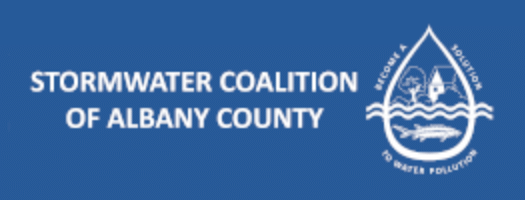Overview
The Federal Clean Water Act establishes standards for surface water and makes it unlawful to discharge pollutants into the Waters of the United States, unless permitted. Embedded within this Act and administered by the United States Environmental Protection Agency (EPA) is the National Pollutant Discharge and Elimination (NPDES) permit program which establishes rules and procedures related to the permitting process.
In New York State, the NPDES program is administered by the New York State Department of Environmental Conservation (NYSDEC). Called the State Pollutant Discharge and Elimination System (SPDES) permit program, it is known conversationally as the “Speedies program”. Failure to apply for permit coverage or failure to implement permit requirements can result in fines of $37,500 per violation, per day, along with criminal, civil and administrative penalties. Penalties are embedded in Federal law and both EPA and NYSDEC can take action against a polluter. Triggers for enforcement action vary, with observed pollution often the starting point for legal action.
Stormwater Permits
While the content of all SPDES permits includes standard language as required by the Clean Water Act, depending on the type of regulated facility and pollutants to be addressed, permits vary one to another.
The stormwater permits focus on stormwater runoff, which is water from rain or melting snow that doesn’t soak into the ground. Instead, it flows over land or through pipes to a low point where it enters a waterway. Along the way, it can pick up pollutants such as bacteria, litter, nutrients, metals, or any number of harmful chemicals which are discharged directly to streams, untreated.
The stormwater permits are general permits which focus on a subset of entities which share characteristics. Industrial facilities are regulated under the Multi-Sector General Permit; public entities which own and operate their own municipal separate storm sewer systems are regulated under the MS4 Permit; and owner operators of construction sites which disturb more than one acres of land are regulated under the Construction Activity Permit.
The MS4 Permit and Construction Activity Permits are intertwined. Each permit points to a mandated task in the other permit. This means that someone responsible for the MS4 Permit needs to be familiar with the Construction Activity Permit and someone responsible for the Construction Activity Permit needs to be familiar with the MS4 Permit.
Below is a short summary of each permit. For someone needing permit coverage, the permits are best understood by reading each permit carefully, including the various forms and documents which need to be submitted to NYSDEC.
MS4 Permit
The NYSDEC SPDES General Permit for Stormwater Discharges from Municipal Separated Storm Sewer System Permit No. GP-0-24-001 includes general permit requirements and six minimum control measures: public education and outreach; public involvement/participation; illicit discharge detection and elimination (IDDE); construction site stormwater runoff control; post-construction stormwater management; and pollution prevention/good housekeeping for municipal operations.
Regulated entities, often referred to as “MS4s” need to develop and implement a program which addresses all of the requirements named in the permit. The due date for completing permit requirements is referenced on the cover of the permit. There is an effective date and expiration date, and requirements need to be completed within this time frame. There are, however, exceptions.
Legal challenges may delay the release of an updated permit such that the expiration date is extended indefinitely until the new permit is released. Stormwater practitioners need to pay close attention to permit dates. If unclear, contact the regulators, NYSDEC or EPA.
Generally public entities located in areas where many people live, own and operate drainage infrastructure which conveys stormwater from a high point to a low point. This serves to get stormwater to the side of the road and eventually off the street, both important for safety.
These same public entities are typically regulated under the MS4 Permit where the criteria for MS4 Permit coverage is based on the type of entity (must be publicly owned) and where the entity is located (must be in an urbanized areas as determined by census data).
State-wide, these urbanized areas are scattered throughout New York State (see state urbanized areas map) and the clusters themselves include a variety of publicly owned entities, such as towns, villages, cities, counties, public universities. A closer look at jurisdictional boundaries and the location of urbanized areas is important as this granular information establishes which MS4 Permit requirements apply where in an MS4 community. .
In Albany County for example (see map), the urbanized area is limited to the most populated areas, with the cities and villages fully urbanized and the towns partially urbanized. For fully urbanized municipalities, the MS4 Permit applies to the entire municipality. For partially urbanized municipalities, some MS4 Permit requirements apply to just the urbanized area, while others apply to the entire municipal boundary.
Albany County itself owns and operates stormwater infrastructure along it’s roads and within County owned facilities, some of which is in urbanized areas, some not. For the County, stormwater infrastructure located in urbanized areas is subject to MS4 Permit requirements.
Public participation is a key element of the MS4 Permit and as such certain documents are made available for public review and comment. These documents include an annual report which is a standardized form developed by NYSDEC (see MS4 Permit Annual Reports ). The public is also encouraged to share comments about overall stormwater program implementation, with the SWMP Annual Evaluation which details program goals, a starting point (see Joint Annual Evaluation – SWMP)
Construction Activity Permit
The NYSDEC SPDES General Permit for Stormwater Discharges from Construction Activity Permit No. GP-0-20-001 requires owner-operators of sites disturbing one or more acres of land to develop a Storm Water Pollution Prevention Plan (SWPPP). SWPPPs describe how storm water runoff will be managed during and post construction. Typically they include site plan drawings; a narrative describing which erosion and sediment control and post construction stormwater practices will be used when and why; operation and maintenance information pertaining to built stormwater management practices; and other items specific to the site.
Construction site stormwater control must conform to the New York Standards and Specifications for Erosion and Sediment Control, or “Blue Book”; while post-construction practices must conform to a suite of acceptable practices described in the New York State Stormwater Management Design Manual. The Design Manual is often updated and stormwater practitioners should routinely check the NYSDEC website for the most current version (see Technical Requirements – Design Manual)
Additional permit requirements relate to legal accountability, training, and inspection procedures. The purpose of the permit is to avoid water quality violations, with the permit stating that for permitted stormwater discharges from construction activity:
- There shall be no increase in turbidity that will cause a substantial visible contrast to natural conditions;
- There shall be no increase in suspended, colloidal or settleable solids that cause deposition or impair the waters for their best usages; and
- There shall be no residue from oil and floating substances, nor visible oil film, nor globules of grease.
Construction Activity, MS4 SWPPP Acceptance Form, and Local Laws
While construction activity permit requirements are national in scope and required of any site disturbing one or more acre of land, construction activity in a regulated “MS4” town, village, or city requires additional oversight. This is the case nationally and state-wide.
Here in New York State owner-operators seeking Construction Activity permit coverage for a project located in an MS4 permitted municipality must obtain an MS4 Permit SWPPP Acceptance Form stating that the municipality has reviewed and accepts the SWPPP.
The municipalities, in turn, as stated in their MS4 Permit need to adopt a local law which gives municipal officials the legal authority to review and accept these SWPPPs, thus providing a full vetting of the SWPPP and an informed sign off on the MS4 Permit SWPPP Acceptance Form. These same local laws also detail enforcment action to be taken by the municipality when there are issues on a construction site.
For information about the general content of adopted local laws, see the NYSDEC Model Local Law for Stormwater Management and Erosion and Sediment Control (3/2006). Local laws adopted by “MS4s” do however often vary from the model local law and as they are embedded within the entire set of local laws governing municipality operations, they can be queried and are accessible.
If the land disturbance takes place in a non-MS4 town, village, or city, when filing for Construction Activity General Permit coverage, the MS4 Permit SWPPP Acceptance Form is not required. The non-MS4 municipality may, however have their own laws related to erosion/sediment control and stormwater management more generally, therefore it is advisable to ask about local requirements.
If an MS4, public entity disturbs more than 1 acre of land, they too as the owner-operator of the site must obtain Construction Activity General Permit coverage. Procedures are typically in place to address their own internal review of the Construction Activity SWPPP.
In addition to local laws pertaining to the Construction Activity Permit, MS4 towns, village, cities, and counties must also adopt an Illlicit Discharge Detection and Elimination or “IDDE” local law. This law empowers a municipality to take legal action should a person discharge stormwater pollution into a catch basin, closed pipe, drainage ditch, or other stormwater related infrastructure owned and operated by the municipality.
Examples of stormwater pollution include sediment from a construction site, pet waste, motor oil, yard debris, restaurant grease, excess fertilizers and pesticides, bacteria from a failing septic system, or sanitary waste due to the cross connection of a sanitary line to a storm system line.
For information about the general content of these Illicit Discharge Detection and Elimination local laws see the NYSDEC Model IDDE Local Law (2006). For the actual local law, query municipal local laws.
If a municipality fails to adopt any of these local laws and fails to administer related MS4 Permit requirements, they are in violation of their MS4 Permit and subject to Clean Water Act enforcement action.
Similarly, if an MS4 fails to get permit coverage for MS4-owned construction projects eligible for Construction Activity Permit coverage, the MS4 is violation of the Construction Activity Permit.
In 2010 NYSDEC released their Technical Operational Guidance Series 1.4.2 regarding Compliance and Enforcement of SPDES Permits which makes explicit the consequences of non-compliance for all SPDES Permits, not just the MS4 and Construction Activity Permit.
Local SPDES Permits
Here in Albany County, as of 2019, there are 501 active SPDES Permits, and of these 375 focus on stormwater discharges. The remaining SPDES permits address discharges from factories, sewage treatment plants, sanitary sewer overflows, and combined sewer overflow systems. This compares with 25 SPDES Permits in 1980 with the majority of SPDES permits then focusing on discharges from factories and publicly owned sewage treatment plants. (See Table of Albany County SPDES Permits).
This 20-fold increase in regulatory responsibilities reflects the impact of stormwater regulations which went into effect in 2003 and a more informed understanding of what causes our waterways to be polluted. While these SPDES Permits are challenging and often overwhelming, the purpose is to protect the drinking water, fisheries, recreational beaches, and aquatic ecosystems found in our own communities. With this goal in mind, each permit holder has a part to play.
DECinfo Locator Interactive Mapper
For more information about SPDES permits administered by NYSDEC, along with other programs and initiatives, go to the DECinfo Locator interactive mapper, here.

